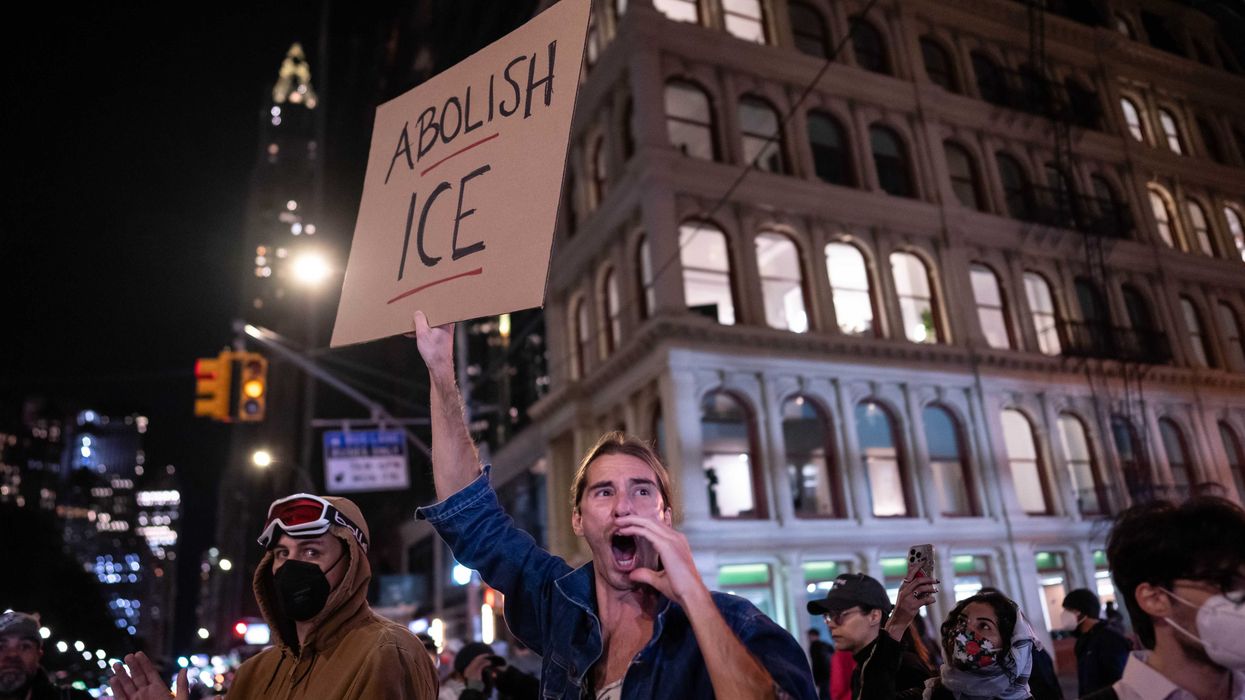STU: Do you think statues honoring the leaders of the Confederacy should remain as a historical symbol or be removed because they're offensive to some people? Now, you'd see, of course, Republicans would be on the side of keeping them up. You would expect that. Eighty-six to six, they want to keep them up. Now, independents should be in the middle of this, right? Independents are the ones -- you're not going to get the party stuff here. Independents support keeping the statues up, 61 to 27.
PAT: Wow.
STU: It's not a close call. This is a blowout, keep the statues up. And you might think, well, Democrats though, are really going to oppose it. No.
They are split on the issue: 44 percent say keep the statues up. 47 percent say take them down because they're offensive.
So the Democrats aren't -- I mean, they're saying that people who are opposed to removing these statues are bad people. Well, let's be honest, you have half of Democrats who say keep them up. You have two-thirds of independents and almost every Republican. So the issue here is not whether you're a racist if you -- if you think statues should remain up. Because across-the-board, there's a lot of people -- the overall, 62 percent of people overall say keep the statues up. And so this is not a particularly close argument. Most people say, "Look, we understand that there were bad things in our history. We -- it's important to keep this up so we remember it." And as Jeffy said earlier in the break, "You walk by one of these statues and it's offensive to you, tell your kid why it's offensive." What a great teaching tool.
JEFFY: Yeah. Absolutely.
STU: And tell them, this is offensive because this person did this, this, and this, and you should know about it. That's a really good way of handling it.
And I can't believe I just complimented Jeffy's parenting style. That is -- wow, I should --
JEFFY: I didn't say I was going to do it. I just said you should.
STU: Good. Good. Okay.
PAT: This -- we're on such a dangerous path to tearing down everything that is offensive to people, to silencing people, to saying that you can't -- that hate speech is not protected by the First Amendment. I mean, we're on a really dangerous path right now towards losing our freedom. If we don't stop this madness, this snowball that's rolling down the hill, we're going to be sorry. And there's not going to be a Constitution that stands.
They're setting fire to it right now. But we're going to have to decide what to do with these Confederate monuments because there's still more than 700 of them throughout the United States.
JEFFY: There's a lot.
PAT: 700. Including one in my hometown, on the mean streets of Helena, Montana.
JEFFY: Right.
PAT: Now, what it's doing in Helena, Montana, I don't know.
JEFFY: Commemorating the Confederacy.
PAT: Yes, it is. But, A, Montana wasn't a state at the time. B, it doesn't get anymore north in the 48 contiguous states than Montana.
(laughter)
STU: That's a very --
PAT: That's a northern state.
JEFFY: Yes, it is.
STU: Is it possible that it was just a shipping error? They gave it to FedEx?
PAT: We meant this for Alabama.
JEFFY: They dropped it off. And Bill said, "You know what, just put it over there." Just put it in the park.
STU: It's too heavy to ship it again. I don't want to box it up. Leave it over there.
PAT: I mean, how does that happen? Pretty weird.
STU: I don't know. This is your hometown. Do you remember seeing it?
PAT: I don't.
STU: Because the map is odd. And, of course, obviously, 98 percent of -- I mean, there's one in Iowa. Is the -- is the next furthest north?
PAT: Jeez.
STU: I mean, there's not a lot.
PAT: That's crazy.
STU: Maybe there's two in Iowa. Outside of that, there's like one in Pennsylvania. But overall, they're all, you know, south, where people generally --
PAT: Where you would expect them to be.
STU: Where you would expect them to be. And then there's just one up there in Helena. Just like, you know what, right here.
PAT: So weird. And apparently, Helena's mayor was originally like, no, we're not going to go remove that. But after Charlottesville, he's now saying, "Yeah, maybe it's time." So...
STU: That's weird. And I don't think we mentioned this: Baltimore just -- in the middle of the night, which is what they do in Baltimore -- they remove NFL teams in the middle of the night and statues in the middle -- why not just remove all the statues, like, yeah, we don't want them.
PAT: Exactly right.
STU: No debate. They didn't have any rallies. And they didn't have any protests, which I'm sure is what they were trying to avoid. But that's an interesting way of doing business.
Yeah, now they're gone. The thing that you saw yesterday, not there now. Huh. Yeah, there you go. Buh-bye.
PAT: Not there. And there's -- there's quite a few places around the country where it's being considered, that they're going to remove them.
And then -- but there's hundreds and hundreds of them where they still exist and nobody is saying they shouldn't, but it will happen. Right?
JEFFY: Oh, we got a rally going on here in Dallas, on Saturday. Right? A big rally for -- in downtown Dallas this weekend.
PAT: Are they rallying for it, to keep it up, or rallying against it? Probably both, right?
JEFFY: I think they're rallying probably both.
PAT: Yeah, probably both. Probably both.
JEFFY: But the main focus of the rally, I believe, is to make it go away.
PAT: Wow. Wow.
JEFFY: Good luck.
STU: And, look, it's not -- it's not -- it's not uncommon in these moments.
JEFFY: Right.
STU: It's an interesting thing. It seems to be new. Like I would have told you ten years ago, there's no way places like, you know, South Carolina are going to take the Confederate flag off.
JEFFY: Right.
STU: It was something so untouchable. In fact, if I remember correctly, and this has been a year or two since this happened. It was engrained in their Constitution that basically you couldn't do it. I can't remember what the actual law was. You couldn't do it. And they just wound up doing it, anyway, because of the shooting, which was a terrible, terrible incident. But it was mainly based on the fact that there was one photo with the shooter with the flag. Like, it wasn't even that he came in there with the flag and said, "I'm doing this for the flag," or anything like that. There was one picture of him on Facebook with the flag. And because of that, they took the flag out of where it was.
PAT: That's where we are. That's where we are.
JEFFY: And then they changed the law. Oh, you know what, we need to change the law again.
STU: And it worked. You know, this is amazing. This goes back to every piece of progressive ideology, as to how to move things around. And I'm not saying -- like, I have no reference for the Confederate flag myself. But the way you move these things is you don't let crises go to waste. There's a crisis. You have an advantage. You have an emotional moment where you can take a couple steps in the direction you want to go. You take it at that time.

 Joe Raedle / Staff | Getty Images
Joe Raedle / Staff | Getty Images
 AASHISH KIPHAYET / Contributor | Getty Images
AASHISH KIPHAYET / Contributor | Getty Images Harold M. Lambert / Contributor | Getty Images
Harold M. Lambert / Contributor | Getty Images Adam Gray / Stringer | Getty Images
Adam Gray / Stringer | Getty Images